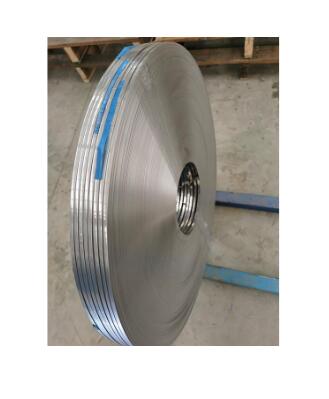Unveiling the Key Characteristics: Why 410 Stainless Steel Strip is Ideal for Specific Industries
2024-04-01
Stainless steel is revered in the industrial world for its exceptional properties, and among its various grades, 410 stainless steel strip stands out as a versatile and reliable option. Renowned for its unique combination of characteristics, 410 stainless steel strip finds extensive use in specific industries where its properties are particularly advantageous. In this blog, we'll delve into the key characteristics that make 410 stainless steel strip suitable for specific industries, shedding light on why it's the material of choice for various applications.
1. Corrosion Resistance
One of the standout features of 410 stainless steel strip is its excellent corrosion resistance. With its chromium content of 11.5-13.5%, 410 stainless steel strip forms a passive oxide layer on its surface, which acts as a protective barrier against corrosion and rusting. This makes it particularly suitable for industries exposed to corrosive environments, such as marine, chemical, and food processing industries.
2. High Strength and Hardness
410 stainless steel strip boasts high strength and hardness properties, making it suitable for applications requiring structural integrity and durability. Its martensitic structure, achieved through heat treatment, provides exceptional strength, allowing it to withstand high loads and stresses. This characteristic makes 410 stainless steel strip an ideal choice for automotive, aerospace, and construction industries.
3. Wear Resistance
The high hardness of 410 stainless steel strip also contributes to its impressive wear resistance. It can withstand abrasion and friction, making it suitable for components subjected to wear and tear, such as bearings, cutting tools, and mechanical parts. This characteristic is particularly valuable in industries where components are subjected to harsh operating conditions, such as mining and manufacturing.
4. Heat Resistance
410 stainless steel strip exhibits good heat resistance properties, retaining its strength and hardness at elevated temperatures. This makes it suitable for applications where exposure to high temperatures is common, such as automotive exhaust systems, industrial ovens, and heat exchangers. Its ability to maintain mechanical properties at high temperatures ensures long-term reliability in demanding environments.
5. Machinability and Formability
Despite its high strength and hardness, 410 stainless steel strip offers good machinability and formability, allowing for ease of fabrication and processing. It can be easily machined, welded, and formed into complex shapes, making it versatile for various manufacturing processes. This characteristic is valuable in industries such as medical equipment, where intricate components are required.
6. Magnetic Properties
410 stainless steel strip exhibits magnetic properties, making it suitable for applications where magnetic permeability is desired. This characteristic is advantageous in industries such as electronics, where magnetic components are used, and in magnetic resonance imaging (MRI) equipment in the medical field.
Conclusion
In conclusion, the key characteristics of 410 stainless steel strip, including corrosion resistance, high strength and hardness, wear resistance, heat resistance, machinability, formability, and magnetic properties, make it an ideal choice for specific industries. Whether in corrosive environments, high-stress applications, or high-temperature conditions, 410 stainless steel strip offers unmatched performance and reliability. Its versatility and durability ensure its continued relevance and widespread use across various industrial sectors, where its unique properties provide indispensable benefits to manufacturers and end-users alike.



